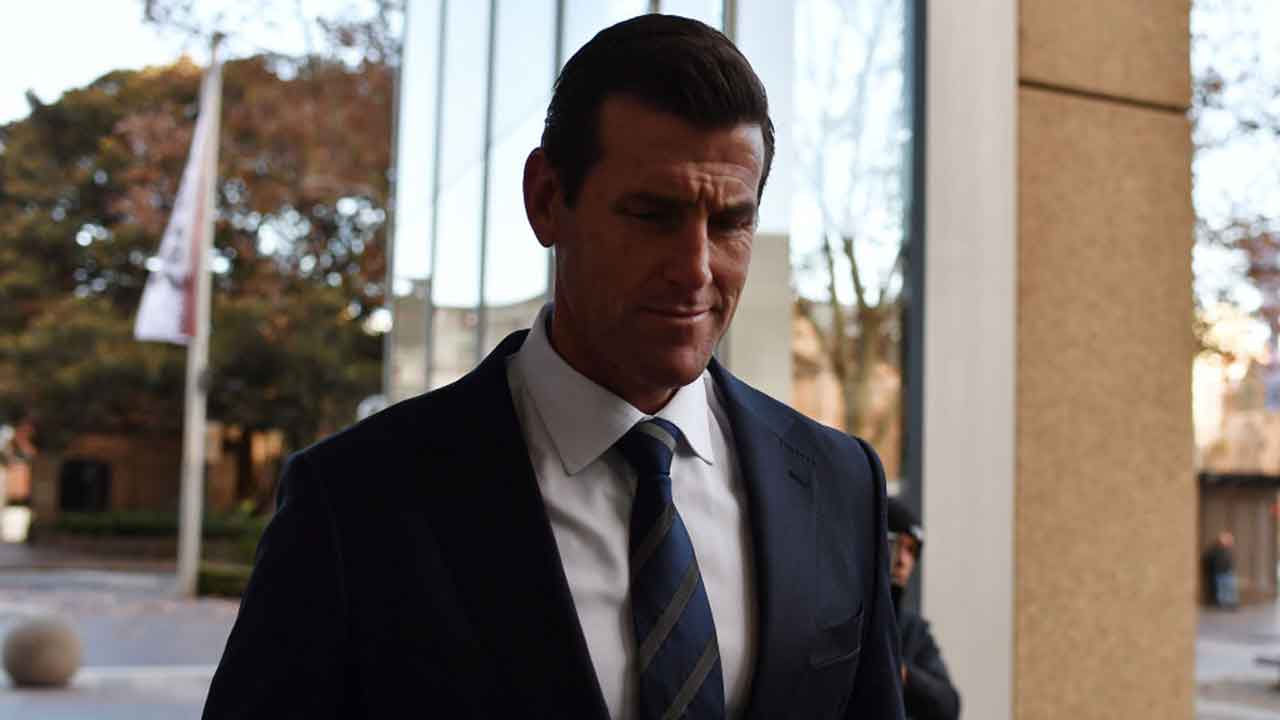“That’s not a cliff”: Ben Roberts-Smith downplays fresh allegations in court

The case between Ben Roberts-Smith and The Age, The Sydney Morning Herald, and The Canberra Times newspapers, as well as several journalists, has recommenced, with an Afghan villager currently testifying.
The man has told the court a radio device was planted on the farmer’s dead body the day he was allegedly killed.
The claim ties into the central allegation that the war veteran kicked a handcuffed, unarmed famer named Ali Jan over a cliff during a September 2012 mission.
Nine Entertainment Co, the publisher of two of the papers, alleges Mr Roberts-Smith made an agreement with Special Air Service Regiment (SAS) colleagues to execute Ali Jan, which the soldiers then attempted to cover up.
Mr Roberts-Smith has denied all wrongdoing and previously recalled in court that he encountered a suspected Taliban spotter in Darwan who was legitimately engaged and killed.
Mohammad Hanifa, who says he is Ali Jan’s step-nephew, told Sydney’s Federal Court through an interpreter and via video link that he and Ali Jan were interrogated and beaten up by soldiers during a raid on the village.
He said one soldier told him to “shut up” and pointed a pistol at his forehead after he denied being a Taliban member.
Mr Hanifa said there was an interpreter with the group and described one of the men as a “big soldier” with “blue eyes”, who punched him “many times”.
He said he warned Ali Jan not to laugh or smile, and that he saw Ali Jan “kicked really hard” by the big soldier after Ali Jan smiled again.
“He was rolling down, rolling down, until he reached the river,” Mr Hanifa said.
“The soldier was looking at him, he was standing there and looking at him.”
He said he then heard a shot and saw two soldiers “dragging” Ali Jan.
When the witness was shown a photograph of the dead man, he identified the man as Ali Jan and became animated when he saw a device in the photo.
“These other things, the bag and the other device, they were not there,” he said.
“They have put these things on his body.”
Barrister Nicholas Owens SC, who is representing Nine, asked the witness whether he had seen Ali Jan carrying a radio that day.
“By God, by God, he had nothing with him,” Mr Hanifa replied.
Earlier, Mr Hanifa said the farmer was not connected to the Taliban.
“He was providing for his children and he was protecting his family and his property.”
The trial had been on hold for a month due to Sydney’s COVID-19 outbreak, but has since resumed after concerns were raised regarding the deteriorating security situation in Afghanistan which could make it difficult to hear from Afghan witnesses.
Mr Hanifa’s testimony comes as The Sydney Morning Herald and The Age revealed an image of Mr Roberts-Smith which was altered by the Department of Defence.
Image: ADF
The photo, released in early 2011, shows Mr Roberts-Smith wearing a blank patch on the front of his uniform.
The newspapers allege they have obtained the original photo, taken on April 6 2010, which shows Mr Roberts-Smith wearing the Crusader’s Cross.
The Crusader’s Cross symbol dates back to the Crusades in the Middle East during the 11th and 12 centuries.
Many Muslims find the symbol offensive, especially when it is displayed by western soldiers in their country.
EDITOR’S UPDATE
While under cross-examination by Bruce McClintock SC, Mr Roberts-Smith’s barrister, the farmer agreed that he referred to the soldiers who had conducted the raids on the villages as infidels.
Mr McClintock asked whether Mr Hanifa “hated” the soldiers.
“If they are coming to our houses, go inside to our women, of course that’s what you call them - infidels,” the witness said.
Mr McClintock also accused Mr Hanifa on several occasions of lying to the court, including his description of the uniform of the “big soldier”, which he described as wet and sandy.
The court had previously heard Mr Roberts-Smith had swum across a river to catch a suspected Taliban member prior to the raid.
“The evidence you’ve given about seeing the big soldier wet is completely untrue, isn’t it?” Mr McClintock asked.
“Whether you call it a lie that’s up to you, but I have seen this person with my own eyes,” Mr Hanifa replied.
Key images of the “cliff” from which Ali Jan is alleged to have been kicked have also been released to the public.
The photographs of Mr Hanifa’s village had been marked by Mr Roberts-Smith while he gave evidence several weeks earlier.
Image: Federal Court of Australia
One of the locations, marked as point “B” on the photograph, is a source of contention, with Mr Roberts-Smith saying it represented a rooftop where his squad waited for extraction after the mission, whereas Nine claim it represents the area where Ali Jan was kicked into the creek bed.
While looking at photographs and images showing a steep embankment down into the creek, the veteran told the court: “A cliff is a cliff - and that’s not a cliff to me.”
